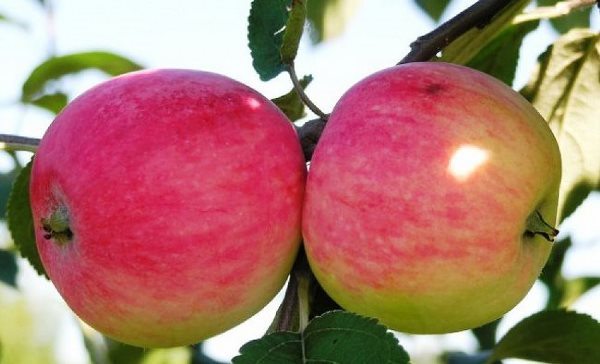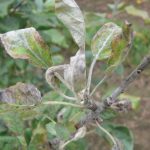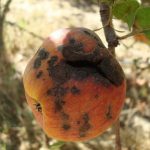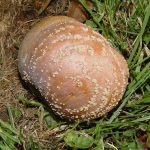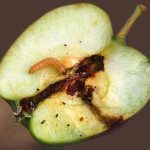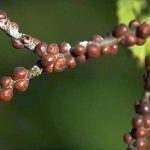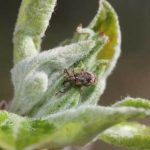One of the most popular fruits that are grown by gardeners are apples. Among the huge variety of varieties, for a long time Melba has stood out. What does he like so much and what is his popularity?
In 1898 Canadian breeders, by pollinating a wild variety of apple trees mac, brought a new varietynamed after Australian opera singer Nelly Melba. A few years later, the variety began to be planted in Europe, and then in Russia. The description and characteristics of this variety can be found below.
Table of contents
Characteristics of the tree and fruit: the look and ripening
Mature Melba trees are medium-grown, since they do not exceed 3 m in height. Crohn is not thick, but broad, rounded in shape. At the initial stage of growth, the apple trees look like columnar, because the process of crown formation occurs slowly and not in one year. The bark of brown color, in some cases, has an orange-rusty shade.
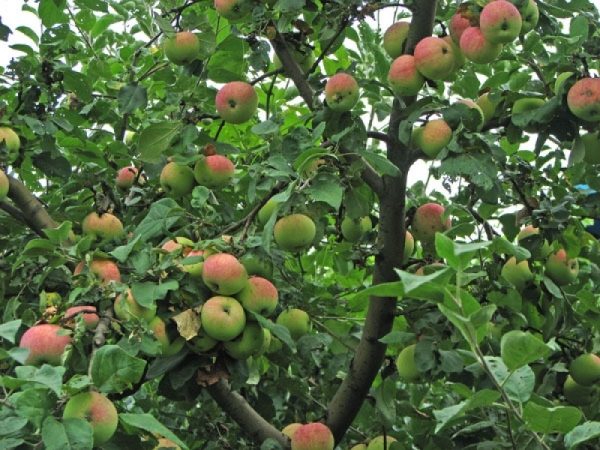
On young branches, the leaves are oval-curved, on older branches - slightly concave. Both those, and others of light green color, at the edges finely jagged. Purple buds bloom large flowers. White, turning into a gently pink color to the base, the petals are quite tight to each other.
Fruit ripening occurs in August, but if summer was not warm, September will have to harvest. A distinctive feature of the fruit is a rounded canonical form and average value. The mass of one apple varies from 130 to 180 grams. The skin of the fruit is thin and smooth, covered with a waxy coating.Apples are light green, with stripes of red color to half the surface of the skin. They have a pronounced caramel aroma and sweet-sour taste.
The advantages and disadvantages of Melba
The popularity of apple varieties Melba is high: it is preferred by many gardeners. The fact that first harvest can be obtained after 4 years. And the apples will be full and tasty. In addition, the advantages include high yield varieties. Fruits are well stored and carry long-term transportation, without losing its presentation.
With all its advantages, the variety cannot be called ideal, as there are melba and apple trees, among which the following can be called essential:
- in practice, the complete lack of resistance of such a common disease of fruit crops as scab;
- instability to frost, which leads to freezing of apple trees in severe winters with a small amount of snow.
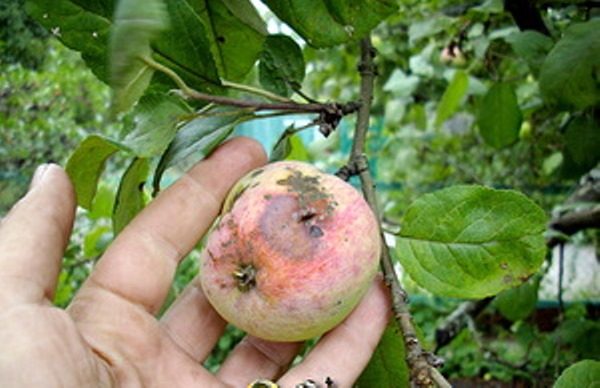
But gardeners have already learned to deal with shortcomings, so with good care on time and increased attention, Melba is able to please with its high yield for many years.
Chemical composition and use of apples of this variety
Melba variety apples are distinguished not only by their excellent taste, but also renowned for their usefulness. They are practically universal. Jam, compotes, jam, juices - all this is amazing in taste. Dried apples have a special aroma, and there is a lot of benefit from them. Vitamins, acids, sugar - all this has a beneficial effect on the human body. Experts have proven that 100 grams of apple melba contains:
- 10-11 gr. Sahara;
- from 10 to 13 gr. ascorbic acid;
- about 10 grams. pectins.
Rules for planting apple seedlings
The best time for planting apple seedlings Melba - autumn, 30 days before the first frost. Between seedlings the distance should be at least 7 meters. If trees are planted in rows, a distance of 3 meters must be maintained between rows. A place to choose sunny, without drafts.In addition, it is necessary to take into account the presence of groundwater.
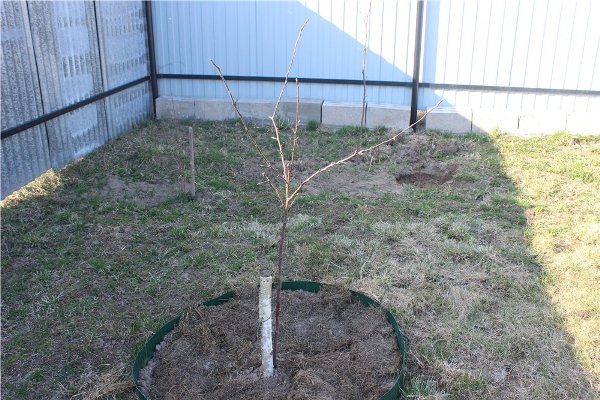
A pit for planting (depth 80 cm, length and width of 1 meter) is prepared in advance, 15 days before planting. The earth dug out of the pit is mixed with peat and humus taken in equal parts.. Coarse river sand is added, the dose should be 2 times less. This compound is mixed with wood ash, superphosphate and potassium sulfate. The bottom of the pit lay out drainage.
From a prepared fertile land at the bottom of the pit a small mound is formed, on which a seedling is placed with a neatly straightened root system. Fall asleep in several stages, each layer slightly tamping. After the pit has completely fallen asleep, the soil is once again tamped down and the seedling is tied to a pre-set support.
Caring for a planted tree
Melba apple trees are not very whimsical in care. The most important thing is not to forget that they do not tolerate cold and frost. Therefore, First of all, attention should be paid to preparing apple trees for winter.. The trunk and branches that form the basis of the tree must be whitened. This will prevent rodents from gnawing on an apple tree. With the same purpose, you can build additional cover: in several layers the trunk is wrapped with sacking or tarpaulin. Layers are shifted with straw and the whole structure is firmly strengthened on the apple tree. For insulation of the trunk, you can use a special insulation material. In the snowy winters around the apple tree you can build a snowdrift.
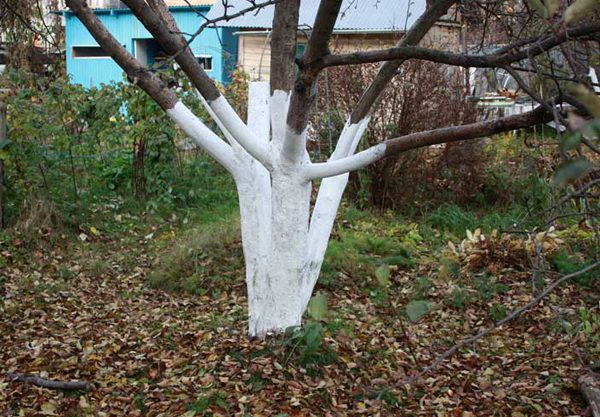
It is necessary to dig up the ground around the apple tree regularly, in spring and autumn. If the soil is fertile, fertilizers are not applied in the first year after planting. In the subsequent time it is good to use nitrogen, humus and peat, wood ash, superphosphate, sodium chloride, potassium as top dressing.
To cut the young apple Melba should be the next year. It is better to do this in spring, until the kidneys wake up. Approximately one third of the central branch is cut, on the side shoots 3 buds are left.and. At 2 and 3 years of growth form a crown, reducing the length of the central shoot. Leave side shoots growing up, the rest is all cut off.
In the future, conduct annual sanitary pruning, removing all the dried and diseased branches, shoots that grow down and into the crown.
Diseases and pests: description and methods of treatment
Among the diseases affecting the variety of apple trees Melba, you should pay special attention to such as:
- scab. At the beginning small brown spots appear on the leaves, which gradually increase and pass to the fruit. Apples stop growing, crack and become covered with dark gray spots. As a preventive measure, in the spring, an apple tree is sprayed with drugs such as Oxyh and Horus. The solution must be prepared strictly according to the instructions for therapeutic agents;
- powdery mildew. A thin white bloom on the leaves blocks the entry of oxygen and moisture. The leaves turn yellow, curl and fall off. The same thing happens with the inflorescences, the fruits are not tied. At that moment, when the leaves just begin to bloom, they are sprayed with Topaz, and after the apple tree has faded, copper chloric acid is used;
- fruit rot. Brown and soft to the touch spots on the fruit, whitish growths. The fruit can not be eaten, because the pulp is soft and brown. Apples infected with fruit rot, fall off. They should be immediately destroyed.With monioliosis (the scientific name of rot) helps 3-fold spraying drugs Skor, Horus and Fundazol.
- Mealy dew
- Scab
- Fruit rot
In addition to diseases affecting trees, apples suffer a lot from pests, which can also make it impossible to eat tasty and healthy apples. The most common are:
- codling moth. From insects will help sticky belt, worn on an apple tree and treatment of ovaries with drugs Tsimbush and Fastak;
- apple tree. Pests suck the sap from the tree, it dries and dies. Before flowering, the soil around the apple tree is treated with aktar, and the apple tree itself is washed with a hard brush with a solution of tar soap with wood ash;
- apple flower eater. It lays the larvae in buds, which subsequently dry up and fall off. Well helps chlorophos solution.
- Codling moth
- Apple shchitovka
- Apple Blossom
Gardeners reviews
Planted Melba last year. The young apple tree took root well, in the summer it was green and bushy. Overwhelmed. But this year the branches began to grow not high, but somehow fell apart on the sides. I tried to collect them, tying (the benefit of a small tree). Now it is worth it.What to do with it - I do not know. I'll wait until spring, I'll see there.
In our garden there are several apple trees Melba. They are no longer young, but they always bear fruit. We really like these sweet apples. I make jam, make compote, juice. Very productive variety.
I think that of all the summer varieties of apples, Melba is the most delicious and quickly ripening variety. True, not a single sapling has grown here, no matter how we planted it, we didn’t take it at all, we dried it up, for some reason. But I will still plant some more, someday, but I will wait for my apples.
Despite the fact that a variety appeared more than a century ago, its popularity has not diminished at all. Melba variety apples are tasty and healthy fruits.and the apple trees themselves are unpretentious and have many advantages in comparison with other varieties.
